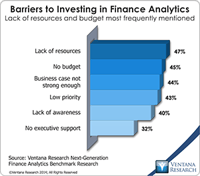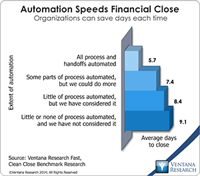When it comes to making a business case for software investments, many people fail to recognize that the case itself is just one part of what amounts to an internal sales and marketing effort that they must perform well to be successful. Focusing only on the numbers and assumptions in a spreadsheet is not enough. Making a successful business case requires an understanding of the audience’s perspective and motivations. Since the individuals who will review the business case may not be...
Read More
Topics:
Planning,
ERP,
Office of Finance,
Operational Performance Management (OPM),
Research,
budgeting and planning,
ROI,
Analytics,
Business Performance Management (BPM),
CFO,
CRM,
Customer Performance Management (CPM),
Financial Performance Management (FPM),
Sales Performance Management (SPM),
Supply Chain Performance Management (SCPM),
business plan,
capital spending,
Financial Performance Management,
FPM,
SCM,
Software
FinancialForce recently introduced FinancialForce ERP, a family of cloud-based software designed to support a variety of customer-centric businesses such as professional services organizations or companies that specialize in business and industrial distribution. Many of these types of businesses are midsize or small (having 50 to 1,000 employees) and can benefit from the integration of FinancialForce’s accounting, professional services automation, human capital management (HCM) and supply chain...
Read More
Topics:
SaaS,
Sales,
Salesforce.com,
ERP,
HCM,
Human Capital,
Office of Finance,
Operational Performance Management (OPM),
Consulting,
distribution,
PSA,
Unit4,
Analytics,
Cloud Computing,
Business Performance Management (BPM),
Customer Performance Management (CPM),
Financial Performance Management (FPM),
FinancialForce,
HR,
Sales Performance Management (SPM),
Supply Chain Performance Management (SCPM),
Workforce Performance Management (WPM),
Professional Services Automation,
SCM
A core objective of my research practice and agenda is to help the Office of Finance improve its performance by better utilizing information technology. As we kick off 2014, I see five initiatives that CFOs and controllers should adopt to improve their execution of core finance functions and free up time to concentrate on increasing their department’s strategic value. Finance organizations – especially those that need to improve performance – usually find it difficult to find the resources to...
Read More
Topics:
Big Data,
Performance Management,
Planning,
Predictive Analytics,
Office of Finance,
Budgeting,
close,
dashboard,
PRO,
Tax,
Analytics,
Business Analytics,
Business Collaboration,
CIO,
In-memory,
Business Performance Management (BPM),
CFO,
Customer Performance Management (CPM),
Financial Performance Management (FPM),
Sales Performance Management (SPM),
Supply Chain,
Supply Chain Performance Management (SCPM),
CEO,
demand management,
Financial Performance Management,
FPM,
S&OP













